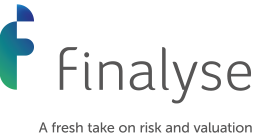
Reviewed by Francis Furey (Principal Consultant)
The European Council and Parliament have agreed on a final compromise text for the Insurance Recovery and Resolution Directive (IRRD)1, released in January 2024. The provisional agreement will lead to the introduction of a new harmonised regime at European level for resolving insurers and enforcing pre-emptive recovery plans. This follows on from the original IRRD proposal2 submitted by the European Commission in September 2021, as part of the comprehensive review of the Solvency II framework.
A number of EU member states, including Ireland, France and Germany, have already established domestic recovery and resolution planning requirements. However, many others lack such specific legislation. While these other countries are well protected by Solvency II, insurer failures still occur and pose significant risks to financial stability and to policyholders. The IRRD addresses this gap by creating a harmonised framework for the recovery and resolution of insurance and reinsurance undertakings.
Those familiar with the Solvency II Directive3 might question if the supervisory ladder of intervention4 already covers this aspect, given that (re)insurers are required to produce a recovery plan within two months of breaching their Solvency Capital Requirement (SCR). However, the recovery plans mandated by the IRRD are pre-emptive and serve to reinforce the SII Directive. This allows insurers to pinpoint viable recovery options to restore their financial positions during future potential periods of severe stress. The key distinction is that these pre-emptive recovery plans are not solely required when a (re)insurer is non-compliant with their SCR, as they will now form an integral part of the (re)insurer’s regular reporting process.
In this article, we focus on the European Commission’s proposals on:
- Pre-emptive recovery plans
- The recovery indicator framework and recovery actions
- Group pre-emptive recovery plans
- Simplified obligations for pre-emptive recovery plans
- The review and assessment of recovery plans
- Resolution plans
- What guidance insurers can expect from EIOPA
Pre-emptive recovery plans
(Re)insurance undertakings not part of a group are required to draw up a recovery plan and regularly update it. The extent of these requirements for each (re)insurer is based on the eligibility criteria, which are described in a later section. Supervisory authorities must ensure that at least 60% of the respective market is subject to such requirements, with the market coverage level for both the life and non-life markets calculated by the supervisory authority.
If an insurer is required to produce a resolution plan, they will also be subject to pre-emptive recovery planning requirements. However, those considered low risk profile (re)insurers will not be individually subject to these requirements.
(Re)insurers are obligated to update their recovery plans every two years. However, more frequent updates may be needed if there are material changes to the legal or organisational structure, the business or financial situation, or if other significant events arise that could impact the effectiveness of the recovery plan.
The recovery plan should be structured as follows:
- A summary of the plan’s key elements, including material changes to the most recently approved plan.
- A description of the undertaking or group, including a summary of material changes since the previous plan.
- The recovery indicator framework (see next section).
- How the recovery plan has been drawn-up, how it will be updated and how it will be implemented.
- A range of remedial actions.
- A communication strategy.
Recovery indicator framework & recovery actions
The recovery indicator framework should include:
- Qualitative and quantitative indicators which identify triggers for remedial actions.
- Criteria relating to capital (should at a minimum contain any breach of SCR), liquidity, asset quality, profitability, market conditions, macro-economic conditions, and operational events.
(Re)insurers will need to assess the credibility and feasibility of the indicator framework and recovery actions against a range of scenarios. These scenarios cover severe macroeconomic and financial stress events relevant to the (re)insurer, including systemic events, idiosyncratic stress events and combined scenarios.
The recovery indicator framework should be monitored regularly and integrated into the existing governance framework. If monitoring triggers a recovery action, the (re)insurer must notify the supervisory authority immediately. They must also inform the supervisory authority if a recovery action is triggered but the (re)insurer decides against taking such action.
Group pre-emptive recovery plans
The ultimate parent undertaking of a group is required to draw up a group pre-emptive recovery plan and submit it to the group supervisor. The plan should include the recovery actions to be implemented by both the parent and subsidiaries to achieve stabilisation of the group. The structure of the group recovery plan is consistent with that for individual undertakings, as outlined earlier.
(Re)insurers that are part of a group may still be required to submit an individual recovery plan. This requirement applies if no group plan exists or if the supervisory authority determines that the subsidiary is not sufficiently accounted for in the group plan, considering their significance or in relation to similar (re)insurers.
The entity’s recovery plan will undergo internal assessment and approval before being submitted to the group supervisor for review. The group supervisor’s aim will be to reach a consensus within the college of supervisors regarding the review and assessment of the plan, and whether that (re)insurer needs to produce an individual plan.
Simplified obligations for pre-emptive recovery plans
The obligation for (re)insurers to produce a recovery plan is determined by the potential impact their failure could have on the economy. The recovery plan should be proportionate to:
- The nature of its business.
- Its shareholding structure.
- Its legal form.
- Its risk profile.
- Its size and legal status.
- Its interconnectedness to other undertakings or the financial system in general.
- The scope and complexity of its activities.
If the eligibility criteria are met, (re)insurers may qualify for simplified obligations with respect to:
- The contents and details of the plan.
- The submission date and frequency of reporting such a plan, which may be less.
- The level of information required.
- The level of detail required for the resolvability assessment.
Review & assessment
Once the recovery plan is submitted, the supervisory authority has nine months to review and assess it against the following criteria:
- Are the recovery options reasonably likely to maintain or restore their financial position?
- Can the recovery options be implemented quickly and effectively?
- Do the recovery options avoid, to the maximum extent possible, any significant adverse impact on the financial system?
If the supervisory authorities find that there are material deficiencies in the plan after their assessment, or identify material impediments to its implementation, they will notify the (re)insurer. The (re)insurer will then be required to submit a revised plan within two months to address these deficiencies. This two-month period can be extended by one month upon request, where the supervisory authority so agrees. The (re)insurer will have the opportunity to express their opinion on the supervisor’s findings before revising their plan. If the supervisory authority finds that the deficiencies and impediments have not been adequately addressed, they may instruct the (re)insurer to make specific amendments to the plan.
Should the (re)insurer fail to re-submit a plan or if the identified deficiencies are not remedied, the supervisory authority will require the (re)insurer to identify, within a reasonable timeframe, the changes they can make to their business operations to address the deficiencies. If the (re)insurer is unable to identify the required business changes to rectify the situation, the supervisory authority may direct them to take any measures it considers appropriate.
Resolution plans
Resolution authorities must draw up resolution plans for (re)insurance undertakings based on similar eligibility criteria to those used for recovery planning. Small and non-complex undertakings will in principle not be subject to pre-emptive recovery planning requirements, except where the resolution authority considers an undertaking to represent a particular risk at national or regional level. Group resolution authorities are responsible for drawing up group resolution plans.
Resolution authorities must ensure that at least 40% of the state’s (re)insurance market be subject to resolution planning. (Re)insurers are required to cooperate fully with the resolution authorities during the drafting of resolution plans, providing all the necessary information.
While producing the resolution plan, (re)insurers and groups will be subject to a resolvability assessment. (Re)insurers will be notified of any significant impediments to resolvability. Upon notification, (re)insurers will have four months to propose possible measures or remove the impediments identified by the resolution authority. The authority will then separately assess whether the proposed measures effectively address or remove the identified impediments.
If the resolution authorities find that the proposed measures are not effective, they will require the (re)insurer to take any of the following alternative measures:
- Revise intra-group financing agreements, review the absence thereof or draw up service agreements.
- Limit their maximum individual and aggregate exposures.
- Impose specific or regular additional information requirements.
- Divest specific assets or restructure liabilities.
- Limit or cease specific or existing proposed activities.
- Restrict or prevent development of new or existing business lines or sale of new or existing products.
- Change reinsurance strategy.
- Require changes to legal or operational structures.
- Set up a parent insurance holding company.
- Require a mixed-activity insurance holding company to set up a separate insurance holding company to control the undertaking.
The notification is subject to a right of appeal.
What guidance can insurers expect from EIOPA?
- The eligibility criteria for simplified obligations.
- Specifying methods to determine market coverage.
- A minimum list of qualitative and quantitative recovery indicators.
- The range of scenarios for credibility and feasibility assessments.
- Technical standards for the information to be included in the recovery plan, recovery actions and their implementation.
- Technical standards for procedures and a minimum set of standard templates for (re)insurers to provide resolution authorities with the information to draft resolution plans.
- Specify further details on the measures that resolution authorities can take to address impediments to resolvability and the circumstances in which they may be applied.
This will take the form of guidelines, regulatory technical standards (RTS) and implementing technical standards (ITS).
On 18 November 2022, EIOPA held a technical seminar relating to recovery and resolution planning in (re)insurance. The seminar covered a variety of topics, including the differences between the IRRD and Bank Recovery and Resolution Directive (BRRD) frameworks, a practical case study on the resolution process, and the concept of proportionality. Additionally, they discussed the establishment of resolution authorities and shared experiences from Poland, approaches to resolution planning in France, resolution funding, and issues relating to Insurance Guarantee Schemes (IGS).
EIOPA will work closely with the NCAs to develop the technical material and guidelines. In addition to this, they will establish a Committee to promote a harmonised resolution convergence, in which the heads of all the resolution authorities will be represented.
How can Finalyse help you?
Finalyse has extensive experience in risk management for insurance companies and can help you implement the Directive’s proposals:
- Gap analysis: Conduct a gap analysis to contrast your current local recovery rules with the IRRD.
- Scenario analysis: Provide guidance on the suite of scenarios to be used, including their timelines and severity.
- Recovery options: Assess the impact, feasibility, and operational effects of potential recovery options, along with the projected timeline for their implementation.
- Recovery indicators: Examine the calibration of recovery indicators, align them with the risk appetite and justify any selected limits or thresholds.
- Governance: Establish procedures for monitoring and escalating triggers, updating the plan, and integrating it into the existing governance framework.
- Strategic analysis: Identify core business lines, key services, and critical functions, while also understanding potential vulnerabilities and assessing the credibility of the recovery plan.
Appendices
- European Council & Parliament final IRRD text: https://data.consilium.europa.eu/doc/document/ST-5546-2024-INIT/en/pdf
- European Commission proposed IRRD text: https://eur-lex.europa.eu/legal-content/EN/TXT/?uri=CELEX%3A52021PC0582
- Solvency II Directive 2009/138/EC: https://eur-lex.europa.eu/LexUriServ/LexUriServ.do?uri=OJ:L:2009:335:0001:0155:en:PDF
- Supervisory ladder of intervention provides for intensified intervention by supervisors between the two levels of capital requirements – the SCR and MCR – to ensure corrective measures are taken sufficiently early.
Finalyse InsuranceFinalyse offers specialized consulting for insurance and pension sectors, focusing on risk management, actuarial modeling, and regulatory compliance. Their services include Solvency II support, IFRS 17 implementation, and climate risk assessments, ensuring robust frameworks and regulatory alignment for institutions. |

Our Insurance Services
Check out Finalyse Insurance services list that could help your business.
Our Insurance Leaders
Get to know the people behind our services, feel free to ask them any questions.
Client Cases
Read Finalyse client cases regarding our insurance service offer.
Insurance blog articles
Read Finalyse blog articles regarding our insurance service offer.
Trending Services
BMA Regulations
Designed to meet regulatory and strategic requirements of the Actuarial and Risk department
Solvency II
Designed to meet regulatory and strategic requirements of the Actuarial and Risk department.
Outsourced Function Services
Designed to provide cost-efficient and independent assurance to insurance and reinsurance undertakings
Finalyse BankingFinalyse leverages 35+ years of banking expertise to guide you through regulatory challenges with tailored risk solutions. |

Trending Services
AI Fairness Assessment
Designed to help your Risk Management (Validation/AI Team) department in complying with EU AI Act regulatory requirements
CRR3 Validation Toolkit
A tool for banks to validate the implementation of RWA calculations and be better prepared for CRR3 in 2025
FRTB
In 2025, FRTB will become the European norm for Pillar I market risk. Enhanced reporting requirements will also kick in at the start of the year. Are you on track?
Finalyse ValuationValuing complex products is both costly and demanding, requiring quality data, advanced models, and expert support. Finalyse Valuation Services are tailored to client needs, ensuring transparency and ongoing collaboration. Our experts analyse and reconcile counterparty prices to explain and document any differences. |

Trending Services
Independent valuation of OTC and structured products
Helping clients to reconcile price disputes
Value at Risk (VaR) Calculation Service
Save time reviewing the reports instead of producing them yourself
EMIR and SFTR Reporting Services
Helping institutions to cope with reporting-related requirements
Finalyse PublicationsDiscover Finalyse writings, written for you by our experienced consultants, read whitepapers, our RegBrief and blog articles to stay ahead of the trends in the Banking, Insurance and Managed Services world |

Blog
Finalyse’s take on risk-mitigation techniques and the regulatory requirements that they address
Regulatory Brief
A regularly updated catalogue of key financial policy changes, focusing on risk management, reporting, governance, accounting, and trading
Materials
Read Finalyse whitepapers and research materials on trending subjects
Latest Blog Articles
Contents of a Recovery Plan: What European Insurers Can Learn From the Irish Experience (Part 2 of 2)
Contents of a Recovery Plan: What European Insurers Can Learn From the Irish Experience (Part 1 of 2)
Rethinking 'Risk-Free': Managing the Hidden Risks in Long- and Short-Term Insurance Liabilities
About FinalyseOur aim is to support our clients incorporating changes and innovations in valuation, risk and compliance. We share the ambition to contribute to a sustainable and resilient financial system. Facing these extraordinary challenges is what drives us every day. |

Finalyse CareersUnlock your potential with Finalyse: as risk management pioneers with over 35 years of experience, we provide advisory services and empower clients in making informed decisions. Our mission is to support them in adapting to changes and innovations, contributing to a sustainable and resilient financial system. |

Our Team
Get to know our diverse and multicultural teams, committed to bring new ideas
Why Finalyse
We combine growing fintech expertise, ownership, and a passion for tailored solutions to make a real impact
Career Path
Discover our three business lines and the expert teams delivering smart, reliable support



